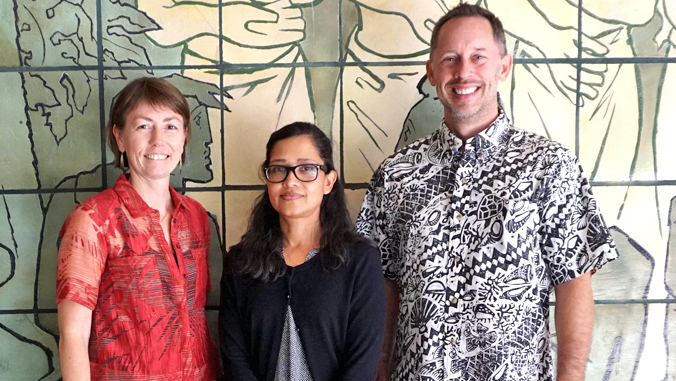
Beginning in fall 2018, University of Hawaiʻi at Mānoa students will be able to pursue a combined undergraduate and graduate degree in environmental planning in five years. Normally this combination would take at least six years to complete, so the opportunity allows students to save time and money.
The pathway is a result of a collaboration between the Department of Oceanography in the School of Ocean and Earth Science and Technology (SOEST) and the Department of Urban and Regional Planning in the College of Social Sciences. It combines the bachelor of science in global environmental science (GES) with the master in urban and regional planning (MURP).
“This is an amazing opportunity for UH Mānoa and UH community college students to get a bachelor in environmental science and a master in environmental planning in just five years,” said GES Chair Michael Guidry. “Students with this combination have the ability to go anywhere in the country and get a job.”
This degree is designed for students interested in the environment and how societies can plan urban development, taking into account environmental and climate change, in a sustainable way.
“The GES and MURP combined pathway program is not only giving me the opportunity to earn a master’s degree in half the time it would normally take, but is also allowing me to use skills I have learned in the GES program in an exciting and unique field,” said Noʻeau Machado, the first GES student accepted into the pathway. “Having a GES degree as well as a MURP degree will also help me in pursuing my goals of working to better the natural environment of Hawaiʻi.”
Said Department of Urban and Regional Planning Chair Priyam Das, “We are delighted to offer this opportunity for students to receive an accredited master’s degree by building on the foundations of the GES program. MURP is a nationally accredited, highly ranked planning program. Our graduates have a very high employment rate (well above 90 percent) in public, private and non-profit sectors, both local and national.”
Read the full story on the SOEST website.
—By Marcie Grabowski


